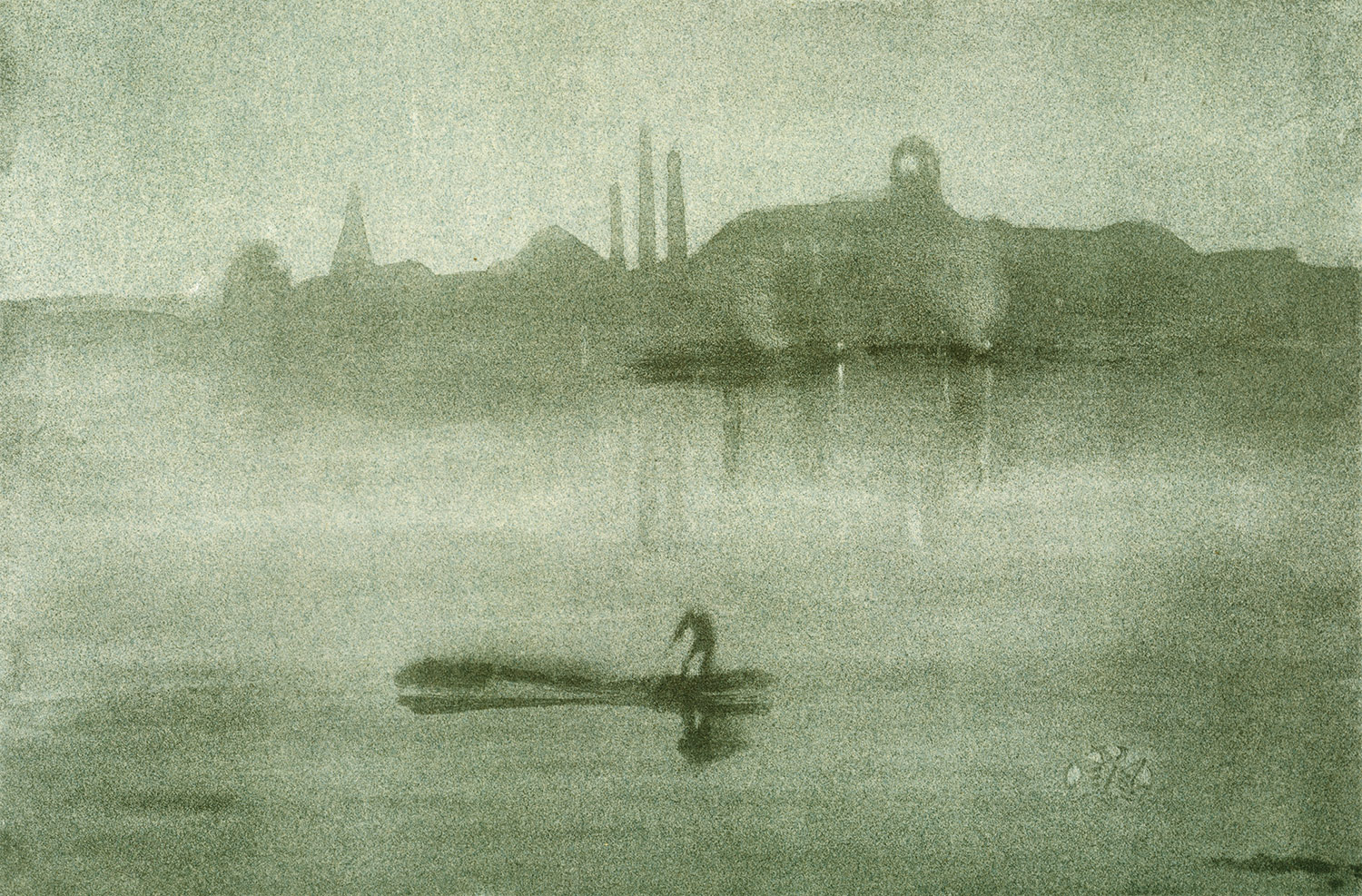2008 (1762)
2009 (1498)
2010 (796)
2011 (759)
2012 (633)
2013 (449)
2014 (575)
2015 (323)
2016 (276)
2017 (470)
2018 (127)
2023 (1)

Nocturnes (L. 91), sometimes Trois Nocturnes or Three Nocturnes, is an orchestral composition in three movements by the French composer Claude Debussy. It was completed on 15 December 1899.
The three movements are:
- Nuages ("Clouds") Modéré – Un peu animé – Tempo I – Plus lent – Encore plus lent.
- Fêtes ("Festivals") Animé et très rythmé – Un peu plus animé – Modéré (mais toujours très rythmé) – Tempo I – De plus en plus sonore et en serrant le mouvement – Même Mouvement.
- Sirènes ("Sirens") Modérément animé – Un peu plus lent – En animant, surtout dans l’expression – Revenir progressivement au Tempo I – En augmentant peu à peu – Tempo I – Plus lent et en retenant jusqu’à la fin.
The three movements were inspired by a series of impressionist paintings, also entitled "Nocturnes" by James Abbott McNeill Whistler.[1]
Debussy wrote an "introductory note" to Nocturnes as follows:
- "The title Nocturnes is to be interpreted here in a general and, more particularly, in a decorative sense. Therefore, it is not meant to designate the usual form of the Nocturne, but rather all the various impressions and the special effects of light that the word suggests. 'Nuages' renders the immutable aspect of the sky and the slow, solemn motion of the clouds, fading away in grey tones lightly tinged with white. 'Fêtes' gives us the vibrating, dancing rhythm of the atmosphere with sudden flashes of light. There is also the episode of the procession (a dazzling fantastic vision), which passes through the festive scene and becomes merged in it. But the background remains resistantly the same: the festival with its blending of music and luminous dust participating in the cosmic rhythm. 'Sirènes' depicts the sea and its countless rhythms and presently, amongst the waves silvered by the moonlight, is heard the mysterious song of the Sirens as they laugh and pass on."[2]
Nuages and Fêtes were premiered by Camille Chevillard with the Lamoureux Orchestra on 9 December 1900 in Paris. The complete suite was first heard under the same forces on 27 October 1901. The initial performances met with a cool response from critics and the public, but today these are considered some of Debussy's most accessible and popular works, admired for their beauty.[1] The music lasts for about 25 minutes.
***************************************************************************************************************************************************************************************

Nocturne: The Thames at Battersea, 1878
James McNeill Whistler (American, 1834–1903)
Lithograph
Born in New England, Whistler studied painting in Paris and then based himself in London. There he introduced the French practice of etching and lithographing as seriously as one painted. In his prints of the river Thames, as in those of the lagoons of Venice, Whistler developed subtle tonal variations that alluded dreamily to a triumph of water and air over substance.
Nocturne painting is a term coined by James Abbott McNeill Whistler to describe a painting style that depicts scenes evocative of the night or subjects as they appear in a veil of light, in twilight, or in the absence of direct light. In a broader usage, the term has come to refer to any painting of a night scene,[3] or night-piece, such as Rembrandt's The Night Watch.
Whistler used the term within the title of his works to represent paintings with a "dreamy, pensive mood" by applying a musical name.[4] He also titled (and retitled) works using other terms associated with music, such as a "symphony", "harmony", "study" or "arrangement", to emphasize the tonal qualities and the composition and to de-emphasize the narrative content.[5] The use of the term "nocturne" can be associated with the Tonalism movement of the American of the late 19th century and early 20th century which is "characterized by soft, diffused light, muted tones and hazy outlined objects, all of which imbue the works with a strong sense of mood."[6] Along with winter scenes, nocturnes were a common Tonalist theme.[7]Frederic Remington used the term as well for his nocturne scenes of the American Old West

"Nocturne in Black and Gold: The Falling Rocket", 1875



